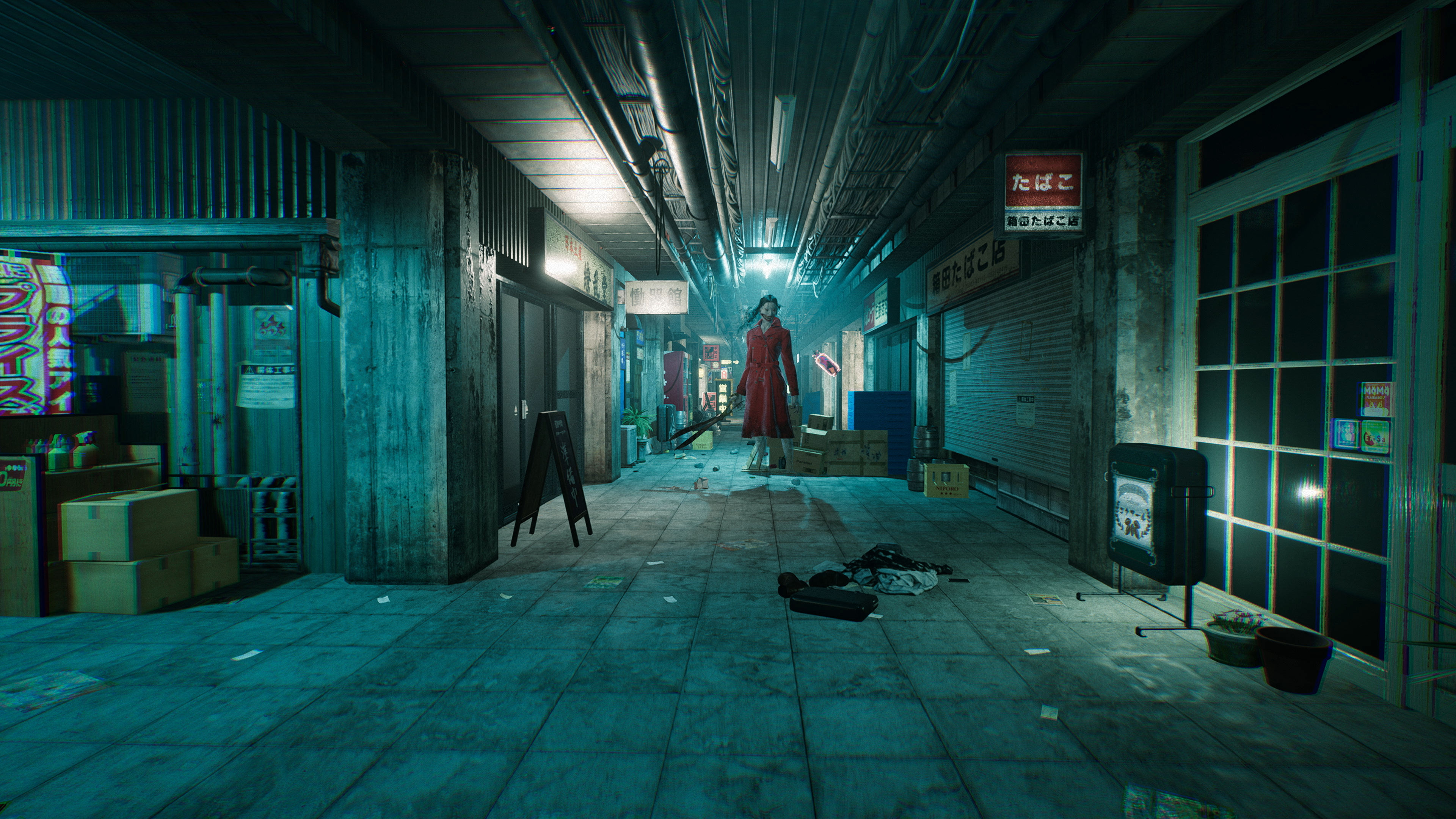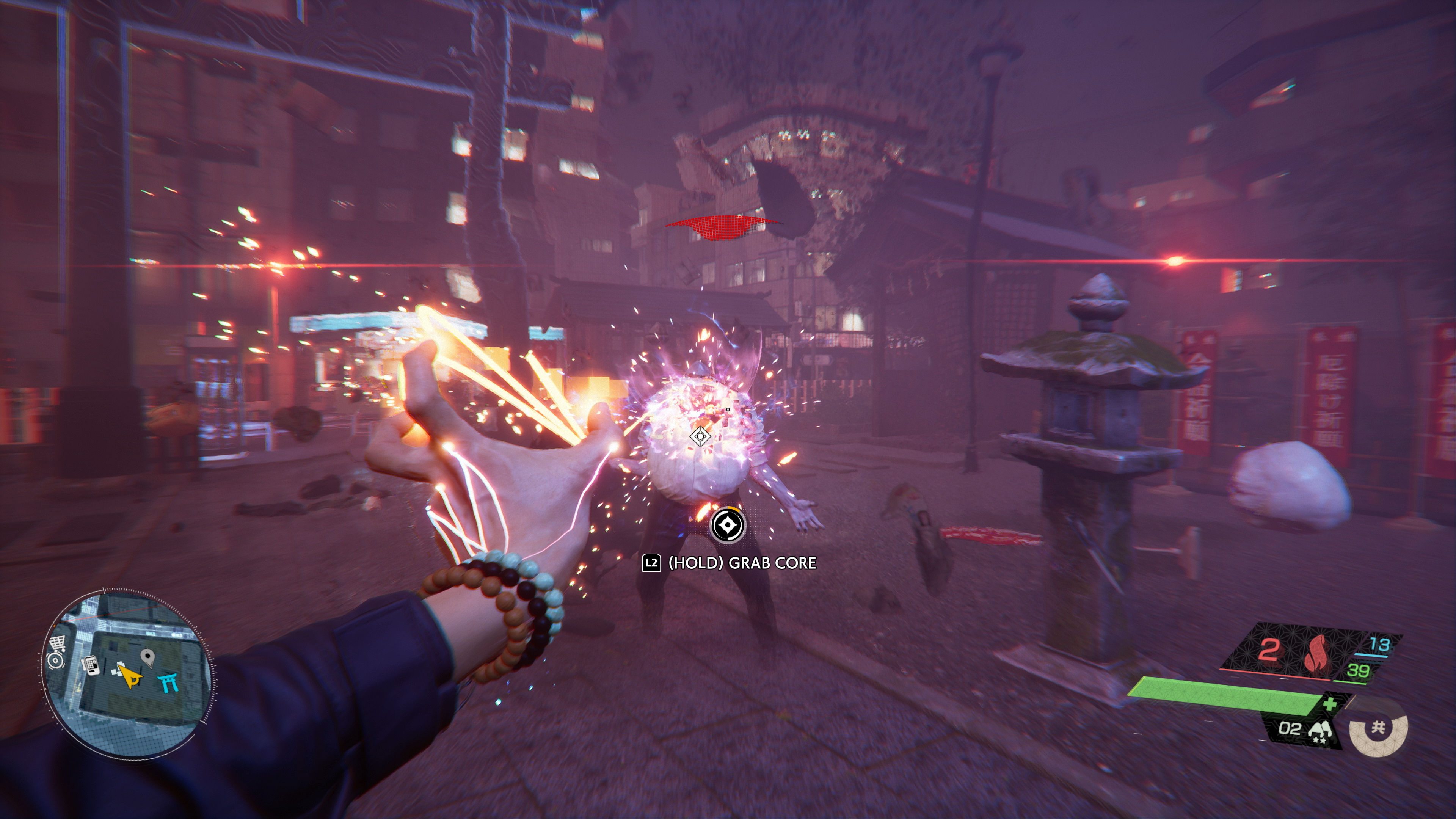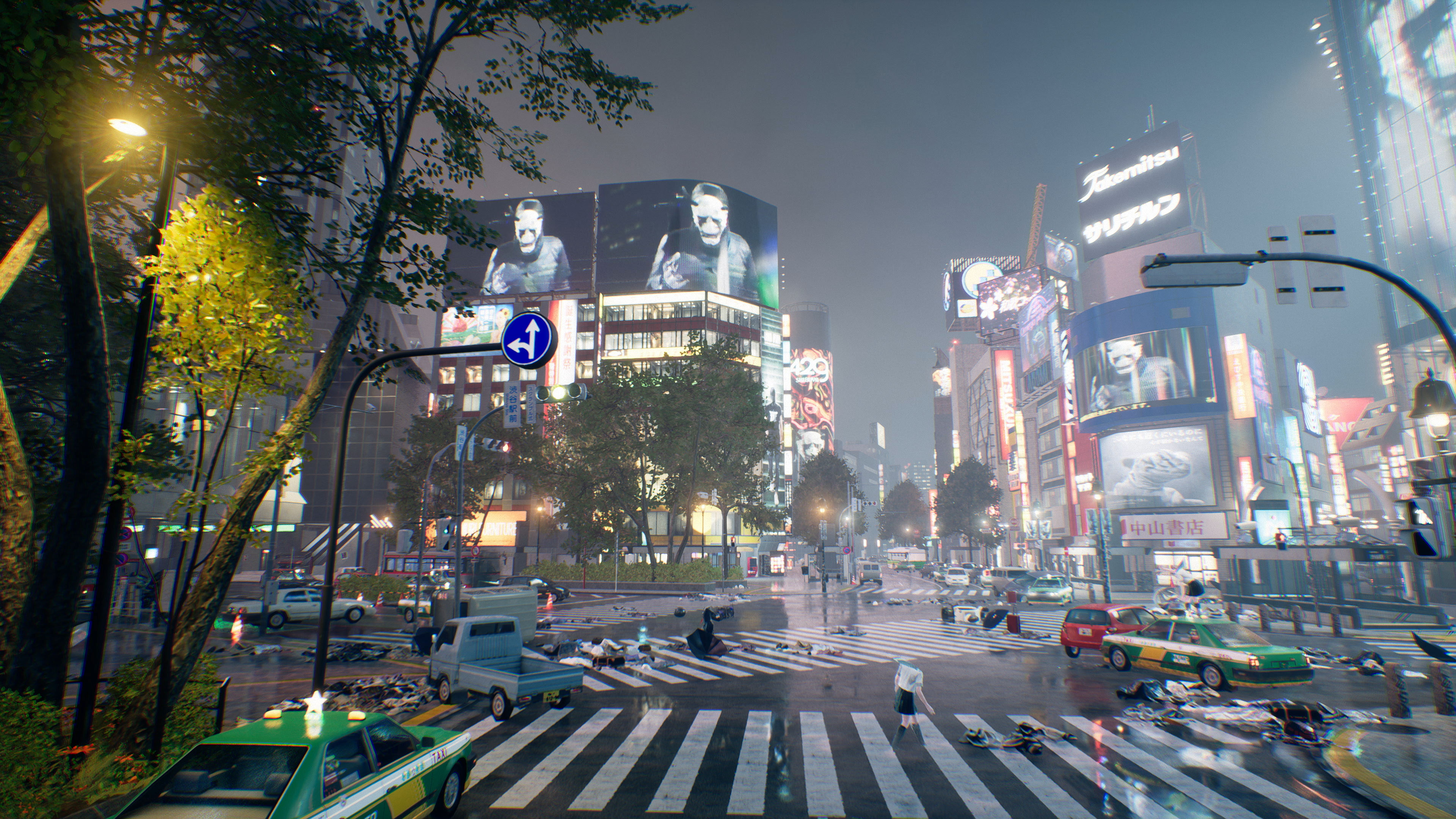Ghostwire: Tokyo is a psychedelic hodgepodge of mystical martial arts
Ghostwire: Tokyo is pressing a lot of buttons. Mixing martial arts with magic, adding a touch of surrealist imagery, underlying that with elements of supernatural horror, and packing the whole thing in a semi-open-world narrative adventure, the PS5 console exclusive isn’t messing around when it comes to carving out a space for itself. It’s a hodgepodge of concepts that’s as tantalizing for its combination as for its promise.
Set in the titular city, Ghostwire: Tokyo pits reluctant hero Akito against an invasion force of demonic spirits. These 'Visitors' have taken up residence in the metropolis after its population vanishes overnight. Of course, they're up to no good, and must be stopped by tracking down and defeating the mastermind of their possessive operation: Hannya, the mask-wearing villain who's adorned most of the game's promo images.
All the while there are loved ones to rescue, potential allies to rally by your side, and city districts to liberate from the encroaching darkness. Oh, and Akito is possessed by a spirit himself – a friendly one, though, and a former ‘ghosthunter’ that was pursuing Hannya before he kicked the bucket. In the half-hour hands-off demo I saw, that all played out as a surrealist semi-linear adventure, which walked close to an immersive sim at times.
Ethereal weaving and crude karate
The segment I previewed comes early in the game. Protagonist Akito stumbles through Tokyo’s abandoned streets encountering its new demonic denizens for the first time while making friends with the spirit living inside his head. These early portions are largely linear, with the player regularly coming across groups of evil Visitors to send back into the void or jumbles of debris to scale in short first-person platforming segments. Some enemies are bent phantasmal figures that wear twisted smiles, while others are faceless suits that look closer to drab Japanese salarymen than the servants of hell.
All, however, must be torn apart using Akito’s karate-meets-magic spellcasting abilities, or 'ethereal weaving' as the devs call it. Combat in Ghostwire: Tokyo doesn’t involve martial arts so much as making complex hand signs to shoot spells from your fingertips. With no punching, kicking, or wild somersaulting through the air, it’s a bit of a fudge, and those hoping for a full-blown brawler won’t find it here. For much of the preview, combat is a slow back-and-forth, as the player throws down hand signals before stepping back to dodge incoming attacks.
“There’s mysticism at work here, making the weird creatures of the game and the magic you use to defeat them appear almost psychedelic”
It’s no less visually impressive, though. Of the three main abilities I’m shown, one involves the player shooting a bolt of energy from their hands to damage and stumble enemies, while a second sees them unleash tendrils of yellow lightning that wrap around incoming spirits, squeezing them tightly, before shattering them into tiny pieces. In the third, Akito summons a protective forcefield to block incoming blows. It’s all colorful, large, and not at all subtle.
The player later picks up a bow to add some ranged, silent firepower to their inventory. Combined with the ability to stealth-kill enemies, you’re able to sneak around groups of spirits or pick them off one by one. But for the most part, it looks like you’ll be charging full-throttle into the fray, unleashing your ethereal weaves before the same is done back to you.
Surreal psychedelia

Where Ghostwire: Tokyo really looks to come to life, however, is in its environment. This Tokyo isn’t the metropolis of smog and bustling commuters we usually see, but a city that’s been broken. Street lights glitch in and out of place, motorcycles hover 10 feet in the air, and mailboxes twist around themselves. Most of this is played for thematic purposes, coloring the world rather than letting you interact with it, but these glitches and otherworldly happenings will also funnel you along the streets, dictating your progress.
In one segment, the player is tasked with entering an apartment building to fetch the possessions of the ghosthunter spirit that’s made itself at home in Akito’s head. They enter the flat, rummage around a bit, and walk out the door to find the building surrounded by a magical force field preventing their escape. As they explore the building to destroy the 'barrier stones' keeping them trapped, the whole complex is morphed with 'underworld interference.' Objects randomly materialize before quickly disappearing, hallways rotate around them, entire walls vanish, and corridors are replaced by entire cityscape vistas.
It’s one of the more obviously linear portions of the preview but gives a good indication of where Ghostwire: Tokyo is heading. This isn’t a straight fantasy game, nor is it as cyberpunk as previous marketing material might suggest. There’s mysticism at work here, making the weird creatures of the game and the magic you use to defeat them appear almost psychedelic.
An open world

But it’s not all linear. Players can move about the world freely, opening up more areas for them to explore by purifying Tori gates of corruption by killing the groups of enemies that have taken control of them.
It’s a familiar beat that’s been played time and again in Ubisoft’s open-world games, although the brief glimpses of the overworld map shown during the preview didn’t suggest this game is overfilled with outposts to clear or waypoints to find. In the section I saw, at least, the player naturally happened upon one of the Tori gates, rather than seeking it out.
“Ghostwire: Tokyo starts to bear a resemblance to immersive sims like Dishonored”
There are occasional side quests, too. At one point, Akito meets the spirit of a friendly old lady who can only venture onto the underworld if her mind is put at rest. A short stopover in an abandoned house, followed by a brief exorcism of the sinister landlord occupying the house, and the player's fulfilled her wish, earning a reward for their troubles.
Couple that side content with the game’s semi-open world, a simple character skill tree to progress through for new abilities, and the option to purchase upgrades at shops (which just so happen to be run by spirits that take the form of floating cats), and Ghostwire: Tokyo starts to bear a resemblance to immersive sims like Dishonored. It doesn’t look to have the freedom that many games of that genre boast or the verticality, but there are hints of that freedom of movement throughout the demonstration.
More to come

A couple of big questions are still up in the air. The depth of Ghostwire: Tokyo’s combat wasn't fully explored, nor was there much mention of the range of abilities you’ll wield. Its levels, too, are still a mystery – will it be a fully open world or split into discrete explorable segments?
From watching a half-hour demo of the game, though, I’m excited. Between its surrealistic environments and ambition, Ghostwire: Tokyo is certainly one of the bolder titles coming to PS5 and PC in the next few weeks.
- Best PS5 games: Sony’s must-have titles
For all the latest Technology News Click Here
For the latest news and updates, follow us on Google News.
